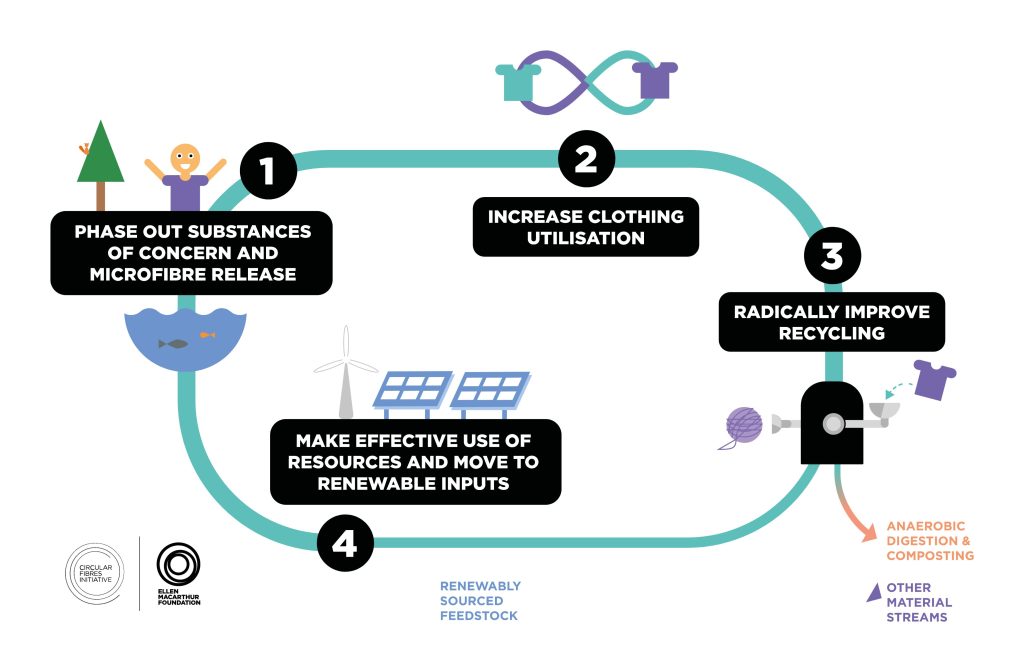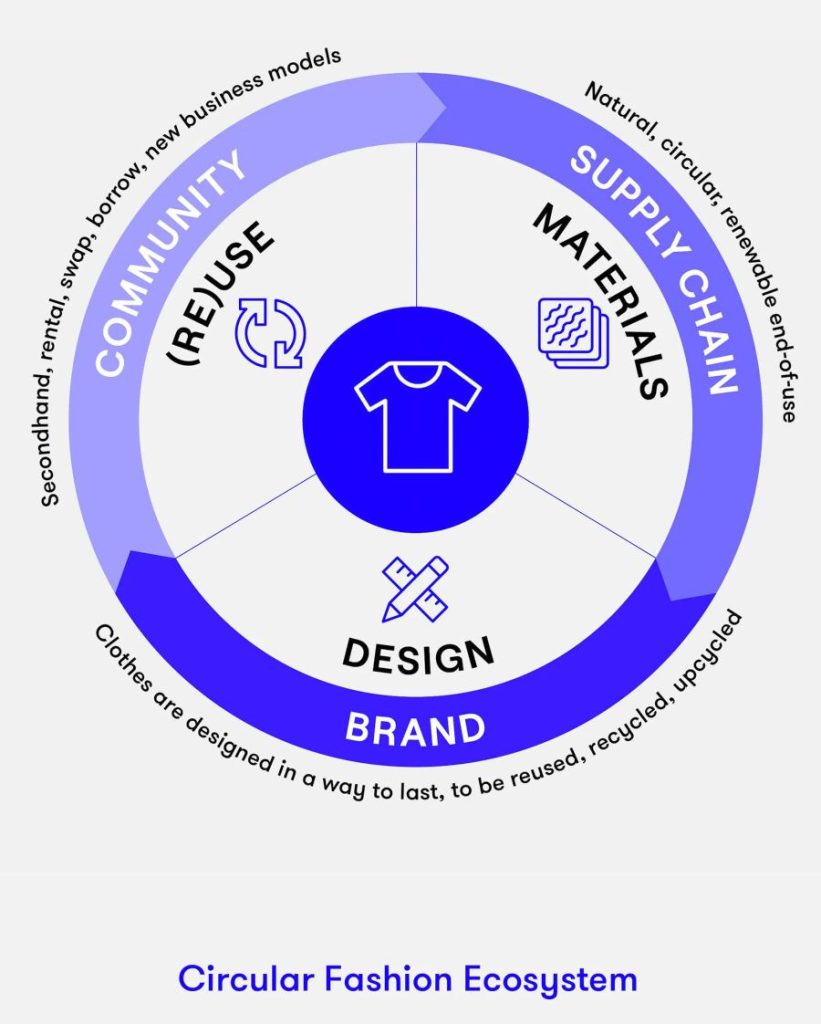So if we don’t want to continue with the ‘take-make-waste’ model of fashion, what’s the alternative? We find out about circular fashion, and why it means a fundamental rethink of the whole fashion production chain.
By Nadin Moustafa, PhD student in the Department of Chemical Engineering.
UK consumers bout 1.13 million tonnes of clothing in the UK in 2016, which is an increase of almost 200 thousand tonnes since 2012. They discard around a million tonnes of clothes per year, according to the House of Commons Environmental Audit Committee in 2019. That’s a lot of waste! Textile companies need to rethink their traditional linear business models. This requires a lot more work than just recycling and reselling clothes. This means making fashion circular.
Circular fashion
To achieve a circular economy in the fashion industry, companies need to consider factors like collection procedures, textile recycling, design of products and strategies for resale. Those “action points” were highlighted at the Copenhagen Fashion Summit 2017. As of June 2018, 94 companies have signed the 2020 Circular Fashion System Commitment, representing 12.5% of the global fashion market. The 2020 commitment includes the following action points:
- Action point 1: Implementing design strategies for cyclability
- Action point 2: Increasing the volume of used products collected
- Action point 3: increasing the volume of products resold
- Action point 4: increasing the share of products made from recycled textile fibres.

Business models will need to integrate reuse and resale into their strategies. This will bring both environmental and economic benefits:
- 95% of discarded clothes can be recycled or reused. Increasing the life cycle of products by as little as 9 months through reselling reduces waste, water and carbon footprints by 20-30% each.
- The apparel resale market share is worth USD 20 billion and is forecasted to reach USD 41 billion by 2022. This also aligns nicely with changes in shopping habits, as 9 million more women bought second-hand in 2017 when compared to 2016 (data from ThredUp 2018).
Challenges to circular fashion models
Global collection rates of textiles are as low as 20%, so the majority end up in landfills and incinerators. Collection schemes need to consider incentives to consumers, and the costs of transportation and sorting. Sorting determines whether the item will be resold, repaired, recycled or discarded to incineration or landfill. Reselling is challenging because of consumers’ negative perception of used clothing.
Recycling requires technology developments that will incorporate disassembling and then regenerating into new yarn. These processes are not yet available at commercial scale. In 2017, less than 1% of the material used to produce clothing is being recycled, even though there is potential to tap into the current loss of USD 100 billion from wasted materials.
Designing for circular fashion
Circular design requires businesses to consider their end-goal when it comes to their products. A company could design for durability, where the aim is to extend the use of a garment to multiple owners. Or a company could design for circularity, where the aim would be to enhance recyclability or biodegradability.

Implementing such measures would not necessarily eliminate fast fashion. It would mean that the fast fashion still exists from the consumers’ perspective, but it is slow from an environmental perspective.
Read about how our fashion trends are having a serious impact on our planet. In the next instalments in the series, we’ll cover how the fashion industry is (slowly) changing, and what we as consumers can do to reduce fashion’s impact on the planet.